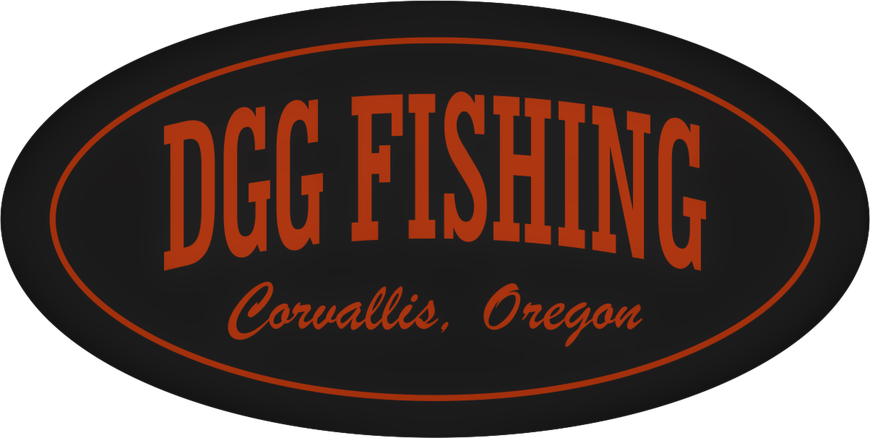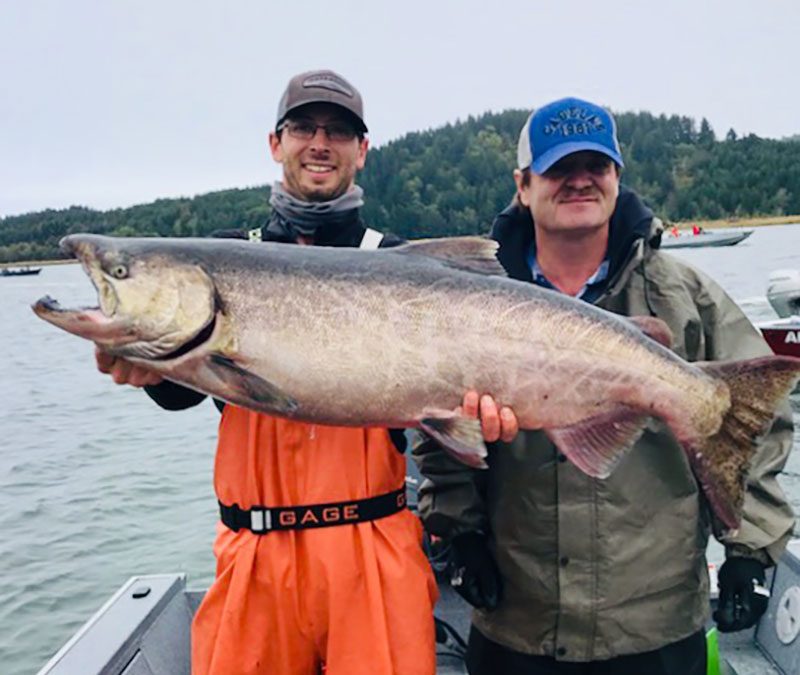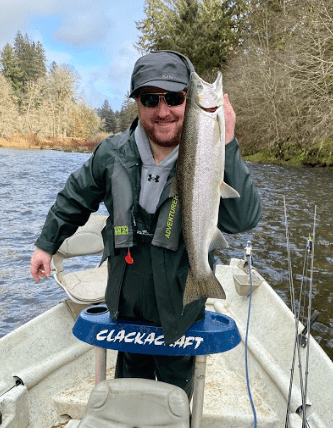
The Alsea River is a short rain feed river that winds down the coastal mountain range and spills across the ocean sands emptying into the Pacific Ocean near the town of Waldport, Oregon in Central Oregon. This river is home to four species from the salmonid family, all of which run wild and spawn in the reaches of this river. The Alsea River offers great fishing opportunity during varying times of the year for Chinook and Coho salmon, winter Steelhead and cutthroat trout. These four species of fish all belong to the salmonid family. The Alsea River has a rich history of providing fish for those that test its water once providing a sustainable food source to the Native Tribes that travelled from the Willamette Valley to harvest and smoke salmon during the fall run. Now anglers from around the world journey to the Alsea to try their hand at landing one of its four prolific salmonid species. For anglers wishing to fish the river it is important to understand the seasons and migration of these fish to have success.
Chinook salmon season opened August 1. During this time salmon are moving in an out of the river with the daily tidal exchanges chasing small bait fish from the Ocean and trying to determine if the water they are smelling is their natal stream. Catches at the river mouth are best during late August through mid-October. Fishing methods used include trolling with a cut plug herring and flasher or a flasher and small spinner. Both methods require knowledge of the salmon holding location, tidal influence on the fish migration and understand speed to produce the perfect action from your lures.
As fall approaches the salmon begin migrating further upriver in anticipation for the first fall rain. When the river rises the salmon rush upstream to begin their spawning. This is when anglers can intercept salmon fresh from the ocean while floating the river from a drift boat. This fishing is best in late October – December. Methods used in the river are more varied that in the bay, anglers will carry a variety of rods rigged for specific techniques based on the different holding water in the river. The most popular methods are using large slip bobbers with a bait of cured salmon eggs. Casting and retrieving small spinners and jigs. Backtrolling plugs wrapped with sardine or tuna or back bouncing cured salmon eggs along the river bottom. Each angler has a preferred method to use while fishing in the river, but the best anglers are able to employ three or more techniques to catch chinook salmon in a variety of holding water.
As the salmon fishing slows in December winter Steelhead begin to enter the river. Steelhead return in much smaller numbers that Chinook or Coho salmon but make up for that in their aggressive nature and acrobatic fights while hooked. Steelhead are regarded as easy to catch but difficult to find. This is where fishing with a knowledgeable captain who can employ the use of a drift boat to cover miles of river will lead to a successful day. Winter steelhead fishing on the Alsea is not for the faint of heart. The weather can be cold and rainy all day and the drift boat navigate through rapids and chutes that make for an exiting ride. The most successful technique to catch steelhead is a using a slip float that allows your presentation to be near the bottom of the river while drifting naturally with the current. While some rivers lend themselves to other techniques like plug fishing, side drifting or drift fishing. The Alsea and its bedrock ledges make other techniques difficult to use without snagging and losing gear. Targeting steelhead on the Alsea requires knowledge of the bedrock shelves and use of a slip bobber in order to have a successful day!
The steelhead season will last until the end of March, fishing remains open until April but most of the fish at this point are spawning and best left alone from the anglers. When the steelhead fishing ends there is a break in the fish returns until Mid-July when the searun cutthroat begin entering the river. These fish are much smaller than the other returning salmon but are great fun to catch and land on a light fly rod and are great table fare when fried in a pan with flour and butter! Searun cutthroat are not picky and likely the easiest of the four species in the Alsea to target. A bright colored fly placed into a deep slow pool or along some overhanging brush is enough to draw a strike. The searun cutthroat will wait until the first fall rains and begin following the Chinook salmon upriver to gorge on salmon eggs during the spawn.



Recent Comments